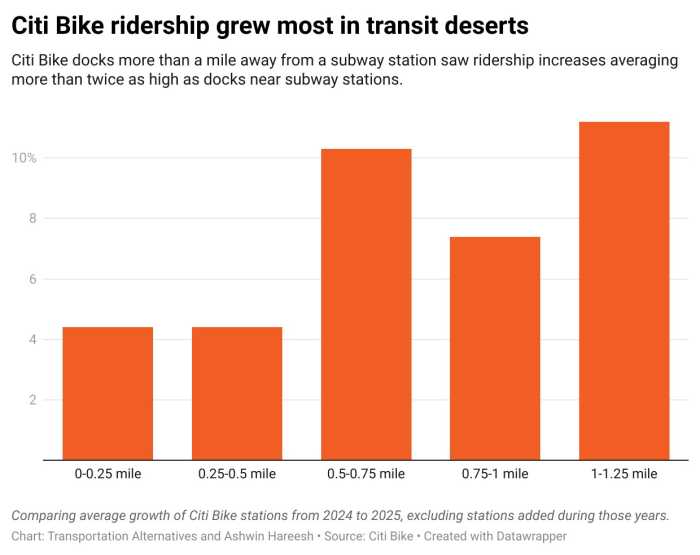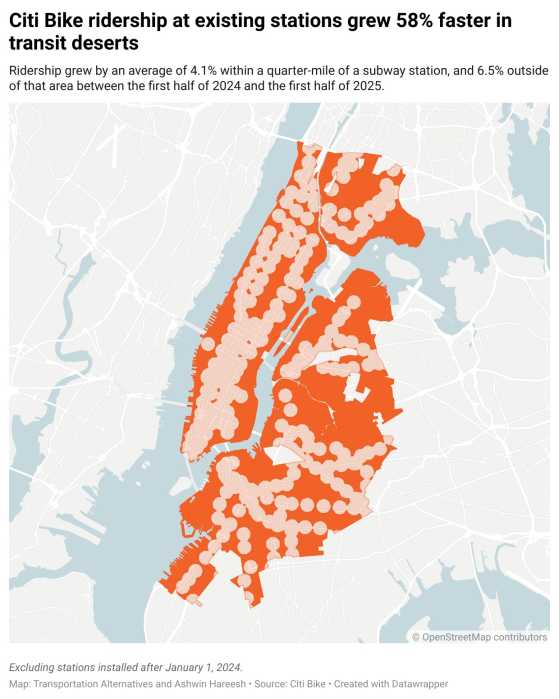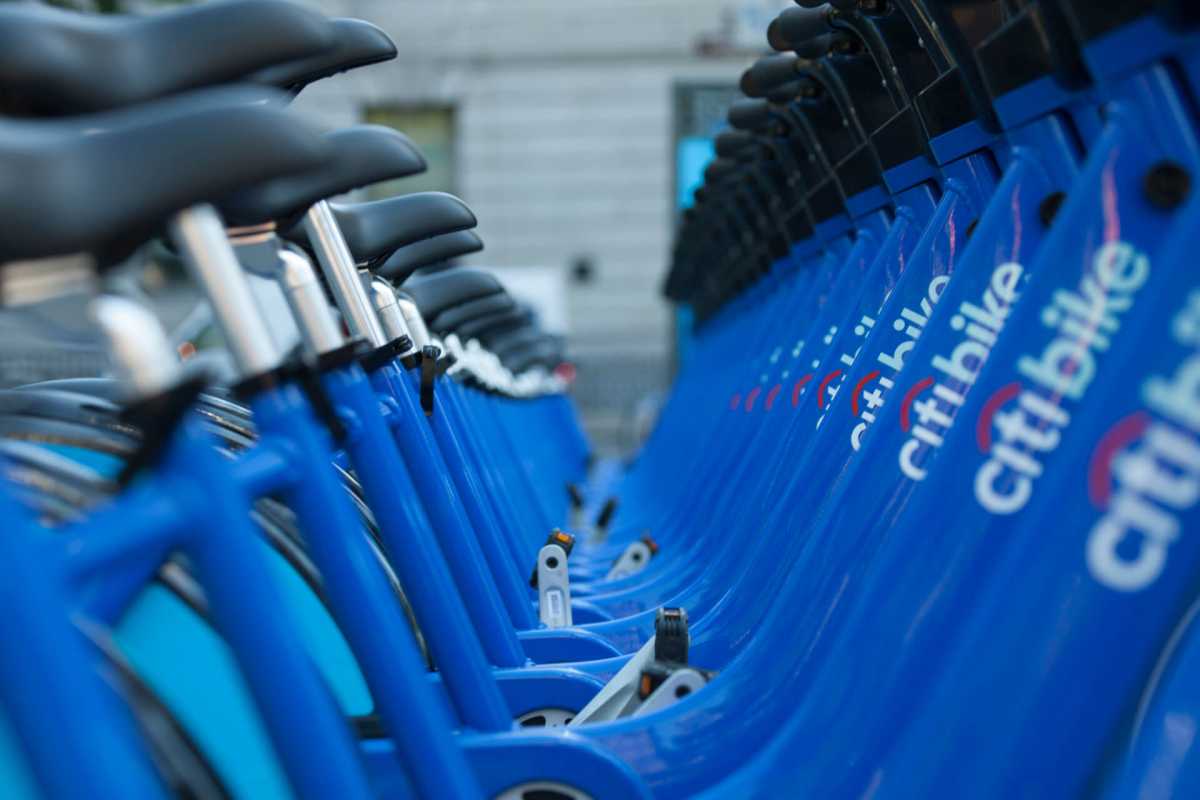A major transit advocacy group reported on Sunday that NYC’s bikeshare system, Citi Bike, is gaining popularity, especially in neighborhoods with limited transportation options.
Staff at Transportation Alternatives told amNewYork that they “crunched the numbers” and found that Citi Bike rides are becoming more abundant, even surging in areas traditionally considered “transit deserts” with limited public transportation options.
The researchers’ data show that Citi Bike is “especially critical” in subway transit deserts. Ridership at existing bike stations grew 58% faster in these dry hubs; it also grew by an average of 4.1% within a quarter mile of a subway station and 6.5% outside of that area, according to the research.
 Transportation Alternatives, which tracks trends in various methods of travel, compared Cit Bike ridership in the first half of last year to ridership during the same period in 2025. One caveat is that the data did not include stations added after Dec. 31, 2023.
Transportation Alternatives, which tracks trends in various methods of travel, compared Cit Bike ridership in the first half of last year to ridership during the same period in 2025. One caveat is that the data did not include stations added after Dec. 31, 2023.
Ben Furnas, executive director of Transportation Alternatives, described Citi Bike as a key part of transit in the Big Apple.
“Citi Bike is a central part of New York City’s transportation system, with an annual ridership twice that of the Staten Island Ferry,” he said. “It’s a critical option for New Yorkers in transit deserts, whether it’s to get around their neighborhoods or to get to a far away subway station.”
According to the NYC Department of Transportation, which runs the Staten Island Ferry, the boats carry about 16 million passengers on the 5.2-mile run between the borough and Lower Manhattan each year. Meanwhile, Lyft, which owns City Bike, reported 45 million bikeshare trips in 2025.
“Ridership is booming, despite Citi Bike being the only bikeshare program in the world to function without public funding,” Furnas said. “The next administration should allocate city funding to the program for the first time, and draw up a three-year plan to improve service and expand citywide, so New Yorkers across the city can benefit from bikeshare.”

Electric vs. traditional Citi Bikes: Which is more popular?
According to the Transportation Alternatives research, electric Citi Bike ridership has doubled between 2023 and 2025, while non-electric ridership dropped by 27%.
The reported increase in ridership comes just a month after Mayor Eric Adams implemented a 15 mph speed limit for all Citi Bike e-bikes, down from the previously allowed 20 to 25 mph limit.
Adams implemented the rule to address a growing number of complaints about speeding e-bikes.
“Lowering the speed limit will protect e-bike riders, pedestrians, and everyone who shares our streets,” Adams said when enforcement of the speed limit went into effect on Oct. 24. “As New Yorkers adjust to this new law, our focus will be on education first and enforcement second — this includes installing new signage in key cycling corridors and issuing warnings to first time offenders.”
Meanwhile, amNewYork spoke to several New Yorkers about why they use – or do not use – Citi Bikes.
“I love Citi Bike,” Lori Skopp of the Upper West Side said, adding that she uses it to get to work in the morning. “One thing I personally like is that I bike to work and it’s very fast. But I walk home because I have a little more time, I’m a little less rushed in the afternoon. It’s a pleasant walk home.”
Bill Swersey, also of the Upper West Side, said he has seen “transportation transformed” by the spread of Citi Bike and bike lanes.
“There’s a Citi Bike station right outside my building on 89th and Columbus and I use it all the time to get around the neighborhood, across town and Midtown,” the cyclist explained. “It’s a speedy, healthy and affordable option.I also have my own bike which I use for longer riders and exercise.”
Like many other cyclists, he also said that NYC needs more enforcement to stop reckless riding.
“We need more enforcement to control wrong-way riders and speeders, especially the new very fast e-bikes, and there are often problems with availability and broken CitiBikes, but compared to years ago, NYC is undeniably a great bicycle city.”
However, some New Yorkers expressed concerns about Citi Bike safety. One New Yorker noted that the program does not provide helmets.
Another person from Queens, who preferred to remain anonymous, said he is concerned about the bikes “taking up space” for parking.
“I have three bike docks in my neighborhood, and they never get used,” he said. “That is a lot less parking available for cars.”
amNewYork contacted Lyft for comment on this story and is awaiting a response.

